Bloggers may be clued in on something your brand is actually missing: Pinterest is an AMAZING product discovery tool. More, it’s basically a shopping list for about 55 percent of its active users. Pinterest itself presents a powerful marketing opportunity that can not only get your products in front of shoppers who have their wallets in-hand, but can also drive huge amounts of traffic to your website.
In this post, I’m going to help you build a Pinterest marketing strategy (you’re welcome) that will fortify your next influencer campaign.
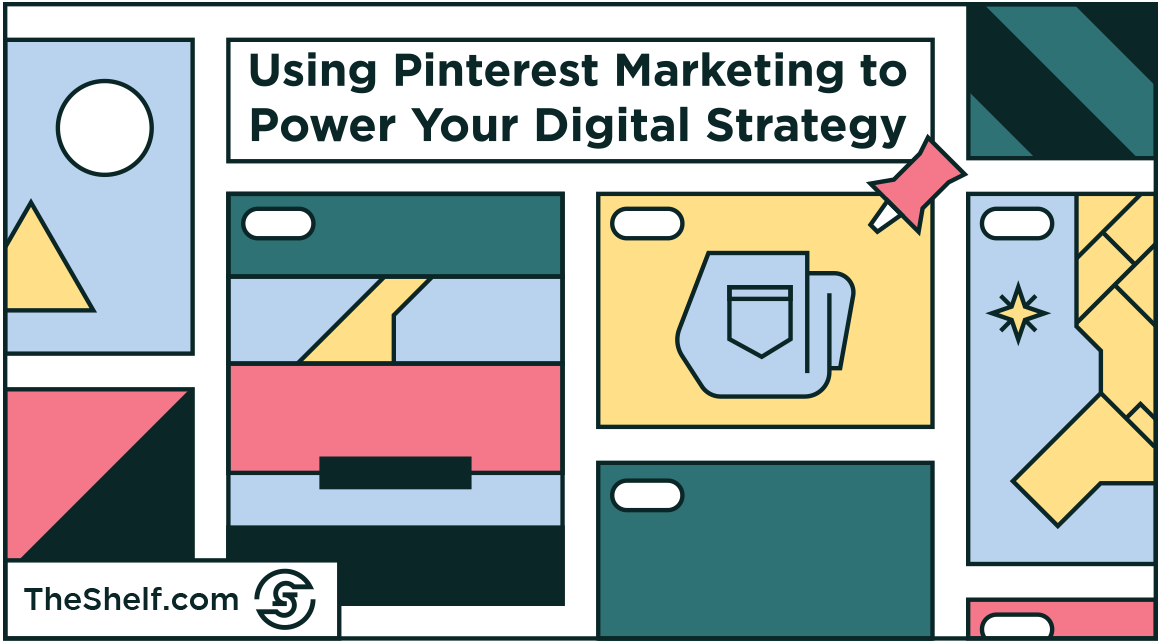
Talk Topics for This Post:
-
A Quick Overview of Pinterest
-
Moms, Millennials and Men: Who Uses Pinterest
-
User Behaviors That Make Pinterest a Digital Marketing Goldmine
-
Tips for Making Pinterest Work for Your Business
A Quick Overview of Pinterest
Pinterest is a visual discovery platform where users can post (“pin”) their own visual content or repin (share) other users’ pins. post contains a title, description and a link to where the content being pinned lives on the web (usually a blog). Pinners must assign every pin a board (collection of pins) in order to pin it and assign any content they repin from another user to a board in their own collection.
So, for instance, with our Pinterest account we pin blog covers images to our board, From The Shelf Blog and pin our infographics to our Influencer Marketing Tips or Marketing Mojo boards. We may repin ideas we like from other pinners in one of several boards we have like Minimalist Bloggers, On the Streets, Summer Forever, or Weekend Style.
Imagine if Instagram and Google got together and had a digital baby. That’s Pinterest.
Pinterest is one-part social media platform, one-part search engine, and completely driven by visual content that can quickly travel across the site, and the world wide web to bring new visitors to your blog, website, or online store.
Pinterest Was Pretty Awesome Out the Gate
Pinterest launched in 2010 as a way to share cool ideas. When it first launched, it was invitation-only. Do you remember that – waiting to hear back from Pinterest and not even fulling getting what it was?
In spite of the invite-only setup, Pinterest ended up being the fastest site in history to reach 10 million monthly active users. Then, like now, it served as a great platform for the crafts and DIY communities, as well as various lifestyle verticals that are driven by visual content (and even lots of verticals – like personal finance – that aren’t super-interested in pretty pictures)..
Today, seven in ten Americans know about Pinterest. With more than 52 million mobile users, Pinterest is the fifth most popular social networking mobile app and the fourth most popular social network behind YouTube, Facebook and Instagram (third if you don’t think of YouTube as a social network).
AND you can find just about anything on Pinterest, from industry information – like how it’s overflowing with colorful marketing infographics like these…
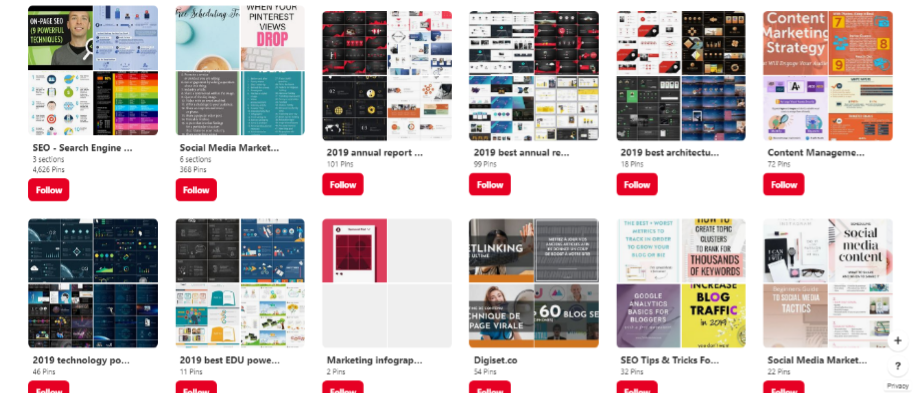
…. to wedding ideas and wedding planning tips.
Pinterest isn’t in the top 10 as far as search engines go, but it may be of interest to brands and marketers that Pinterest is a popular search engine that 39 percent of female users and 48 percent of male users choose over more traditional search engines like Google or Bing, according to AdEspresso.
That makes sense to me. Here’s why…
If you were to search for “short blond pixie cut” on Google then perform the same search on Pinterest, different results would show. More importantly (for searchers), Pinterest filters the results a little smarter for stuff like this.
In the two screenshots below, check out the filter options along the top of each picture (and the fact that Google results INCLUDE Pinterest pins).
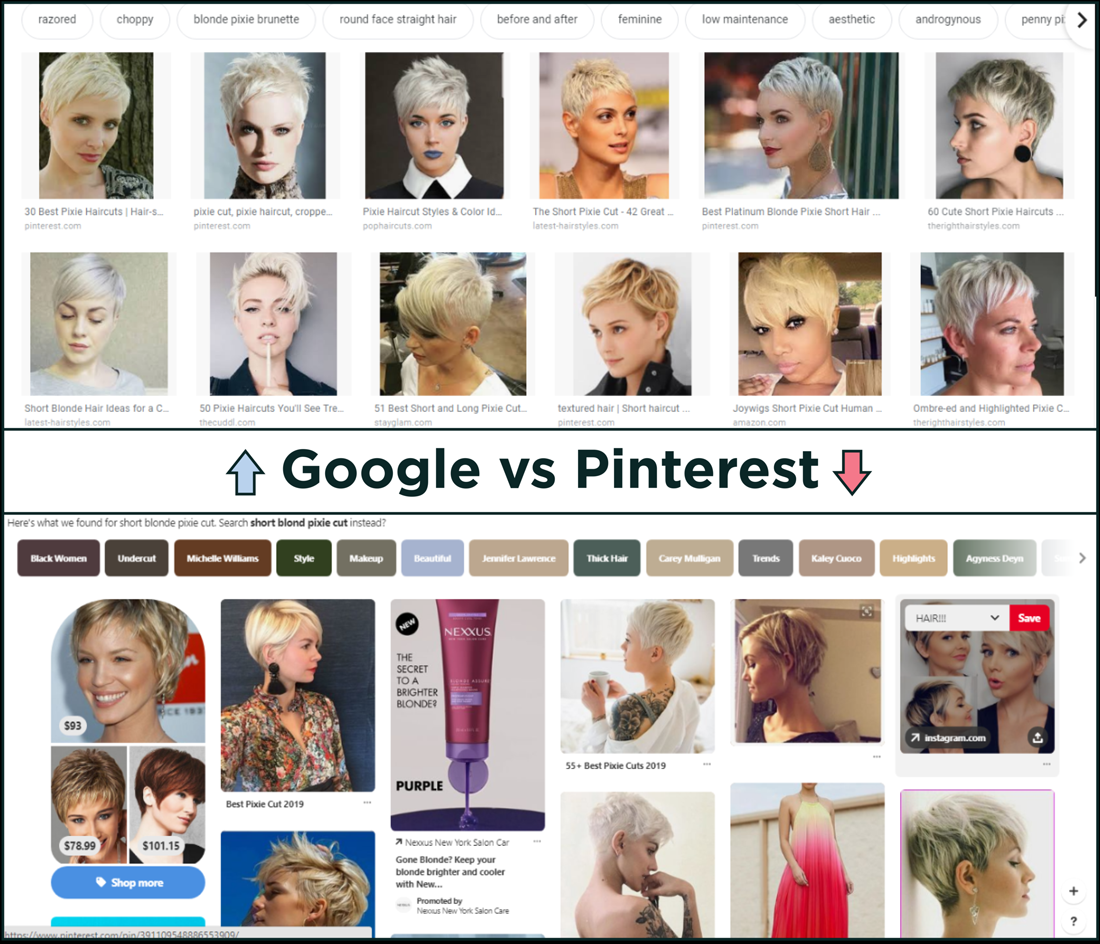
Pinterest also does a better job of integrating sponsored content a little more naturally with your actual results.
Actually, let’s try it for another popular Pinterest topic – home decorating. The search term is “small bedroom ideas”. I actually had to scroll down a bit because the first row on Google was sponsored content / products.
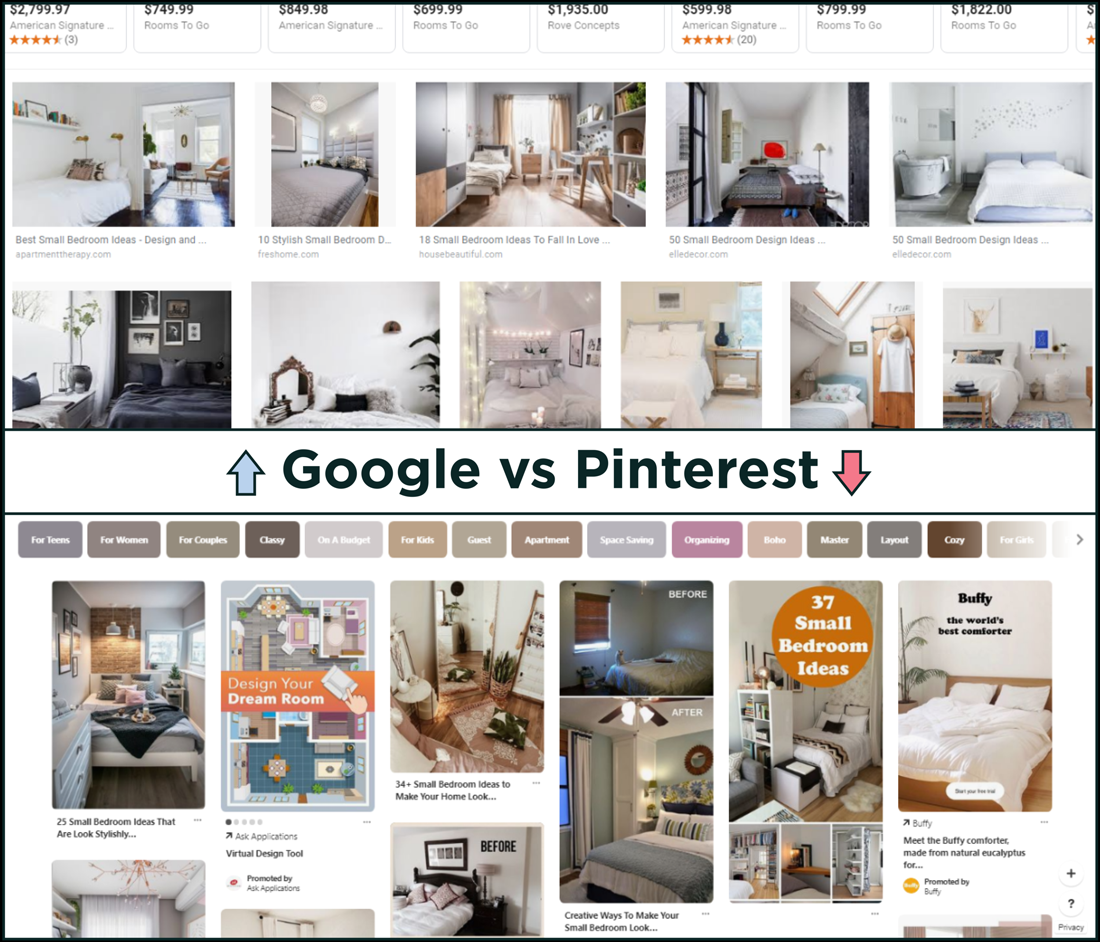
Now, it’s not that people don’t want to shop on Pinterest. The truth is actually quite the opposite. Pinterest is the social platform users are MOST likely to choose when they are ready to spend money.
Ninety-seven percent of Pinterest searches are unbranded searches, meaning users are open to suggestions from brands. In fact, 78 percent of Pinterest users say they want to see branded content, and more than half of shoppers name Pinterest as their platform of choice for finding and shopping for products.
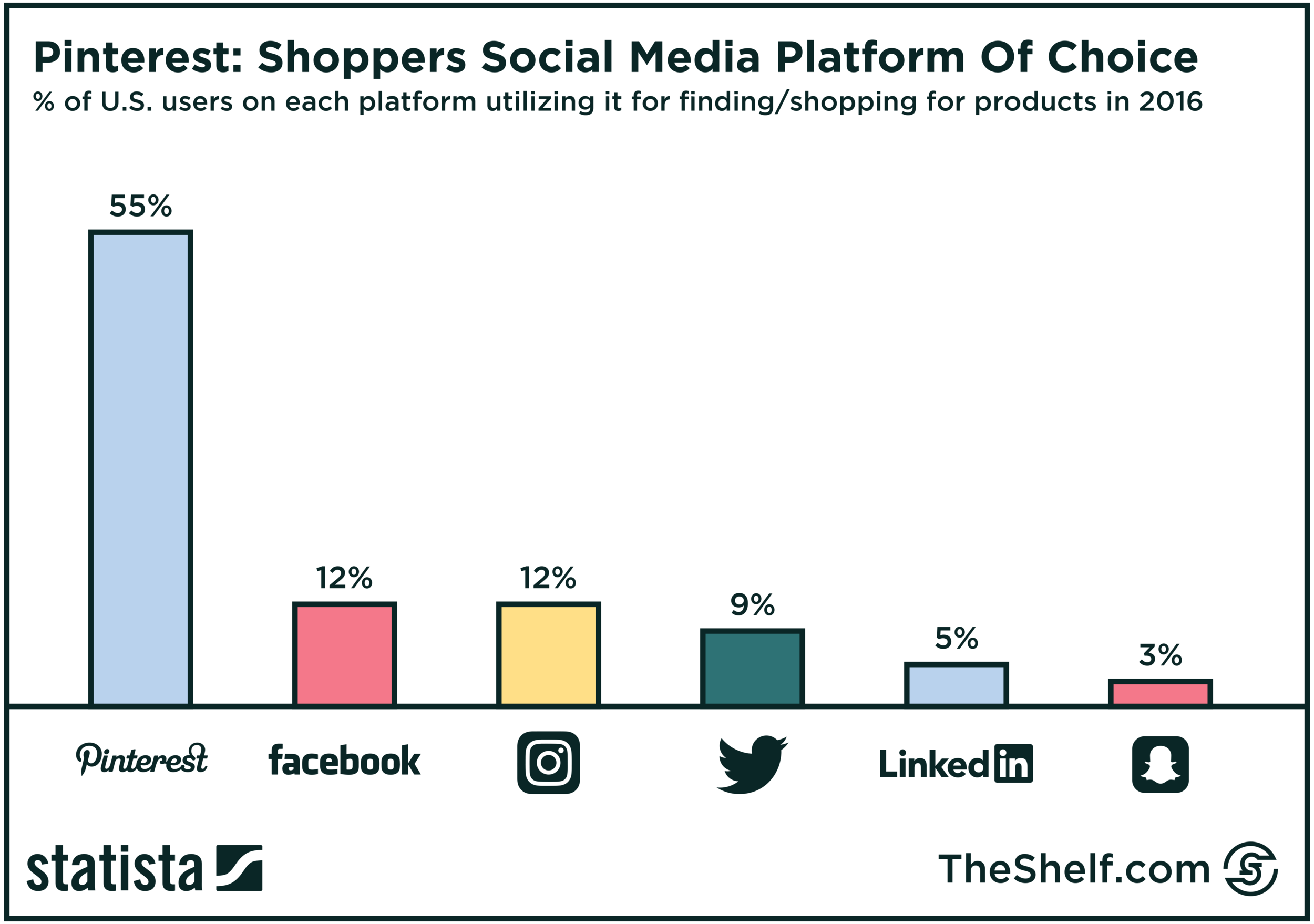
Source: Statista.com
Moms, Millennials and Men: Who Uses Pinterest?
There is a much wider diversity in Pinterest’s audience than you might think. One in three U.S. adults between the ages of 18 and 49 use Pinterest, and one in four adults between the ages of 50 and 64 use Pinterest, according to Statista. Not to worry, those stats change significantly for Millennial users.
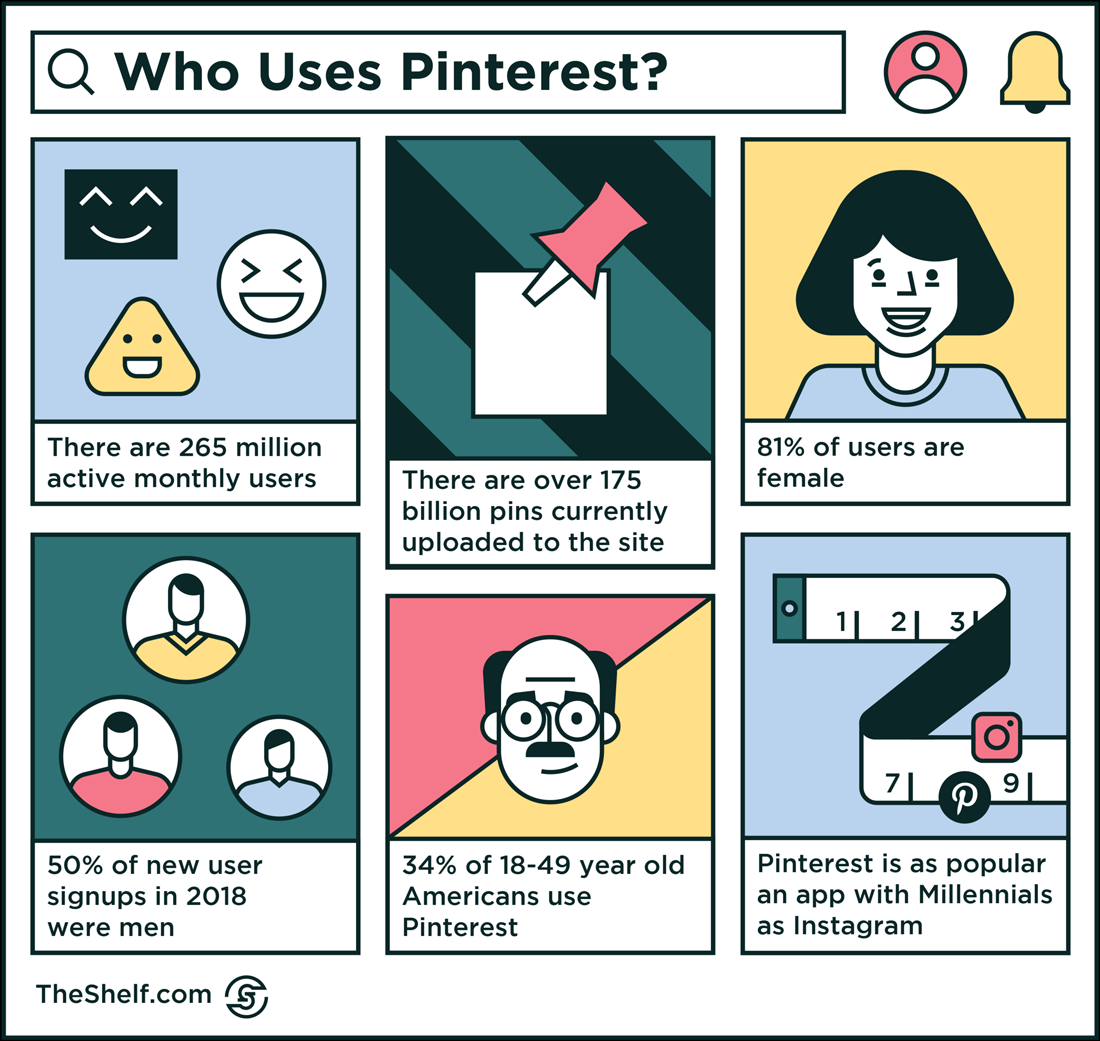
-
There are 265 million active monthly users
-
There are over 175 billion pins currently uploaded to the site
-
81 percent of users are female
-
Half of new user signups in 2018 were men
-
34 percent of 18-49 year old Americans use Pinterest
-
Pinterest is as popular an app with Millennials as Instagram
Pinterest is popular among Millennials, and especially among Millennial women. One in two US Millennials use Pinterest, and 7 in 10 Millennial women use the platform – that trumps both Twitter and Snapchat. Seventy percent of US moms and one-third of US dads also use the super-charged scrapbooking platform.
And people use Pinterest for a number of reasons. Most people use Pinterest to look at pictures (60 percent) and find/shop products (55 percent). It’s also a popular place to share content (24 percent) and watch videos (15 percent).
 Source: Statista.com
Source: Statista.com
So…
A pinner can easily have 1,000 people following her Wedding Ideas board
And 500 other people who are only following her Shoe Lust board
And 2,000 people following her Blogger Tips board AND her Passive Income board
And 900 people following her Bible Verses board who ARE following Passive Income and ARE NOT following her Shoe Lust board.
The possibilities are endless, both for Pinners and for marketers.
Let’s Talk About the User Behaviors That Make Pinterest a Digital Marketing Goldmine
Take a look at the picture below . It was captured a few days ago by Sorilbran, the editor of The Shelf blog who came across the poster at her local McDonald’s.
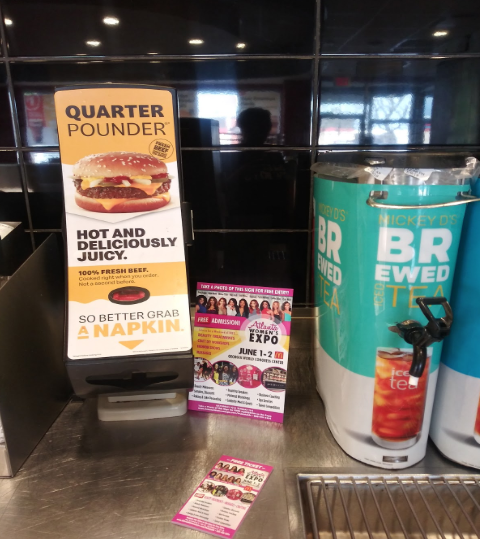
In June, McDonald’s will be sponsoring the Women’s Expo in Atlanta, GA. In case you’re wondering, Atlanta is a global destination point, playing host to the busiest airport in the world. It’s home to a sizable entertainment industry hub, with countless television shows and movies being filmed here (think Avengers and other Marvel Studios movies).
The celebrity lineup for the Atlanta Women’s Expo is nothing to sneeze at – reality stars, social media stars, movie stars… these women are famous.
But it’s not just McDonald’s that will be involved. To give you a better idea of the scope of this event, other sponsors include luxury brands like Chanel, Coach, Michael Kors, Jimmy Choo and Dior, as well as retail heavyweights like The Home Depot, Walgreens, and Kroger.
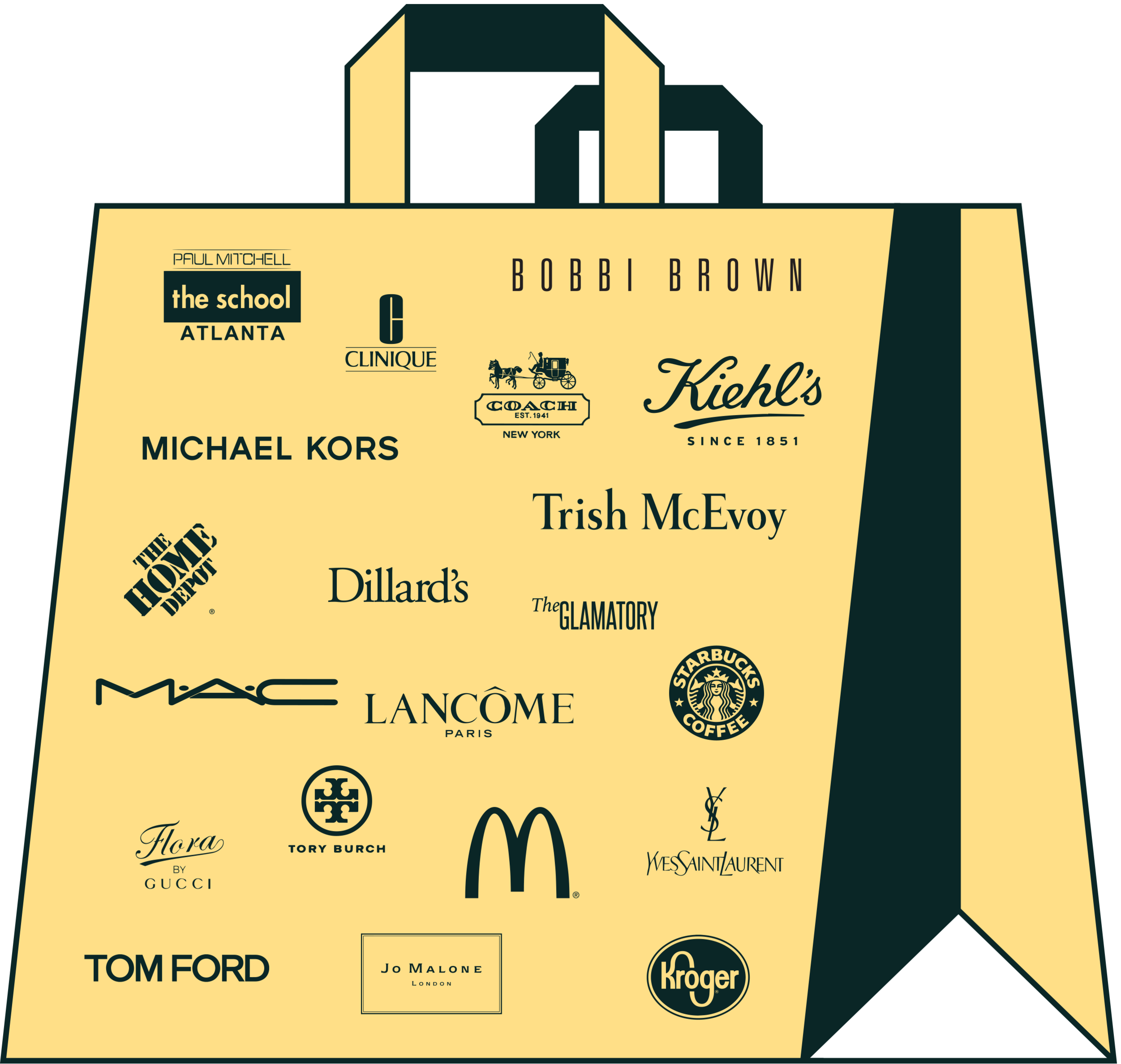
Why am I telling you this? Because upon closer examination of the poster, you can see that one of the featured workshops for this event, which draws tens of thousands of women every year, is a Pinterest workshop. So, let’s talk about why that is.
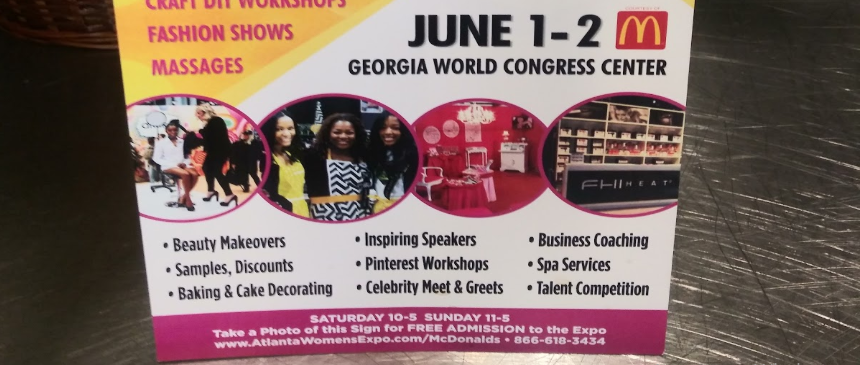
Pinterest Has Cross-Generational Appeal
Whether Millennials or Boomers, adults love Pinterest. They love having a one-click storage place of awesome photos and cool ideas. They love having a place where they can build targeted audiences whose ideas and tastes align with their own.
Pinterest Time is Me Time
Pinterest is where people go to source and collect ideas to help them be their best selves. The fact that Pinterest is so heavily aspirational (with no PERSON in particular to be the target of anyone’s love-hate aspiration) keeps Pinterest from earning the same stigma as some of the other popular social networks. No reports of Pinterest-fueled depression or rage. It’s aspiration without the stigmas. It’s no real surprise (especially to anyone who actually uses the platform) that Pinterest users are twice as likely to think their time on Pinterest is time well spent.
Pinterest is a Positive Corner of the Internet
Pinterest gives all the feels. Pinterest is the platform that helps people feel more creative (73 percent), inspired (68 percent) and organized (62 percent).
Pinners are Planners… and They Plan Waaaay In Advance
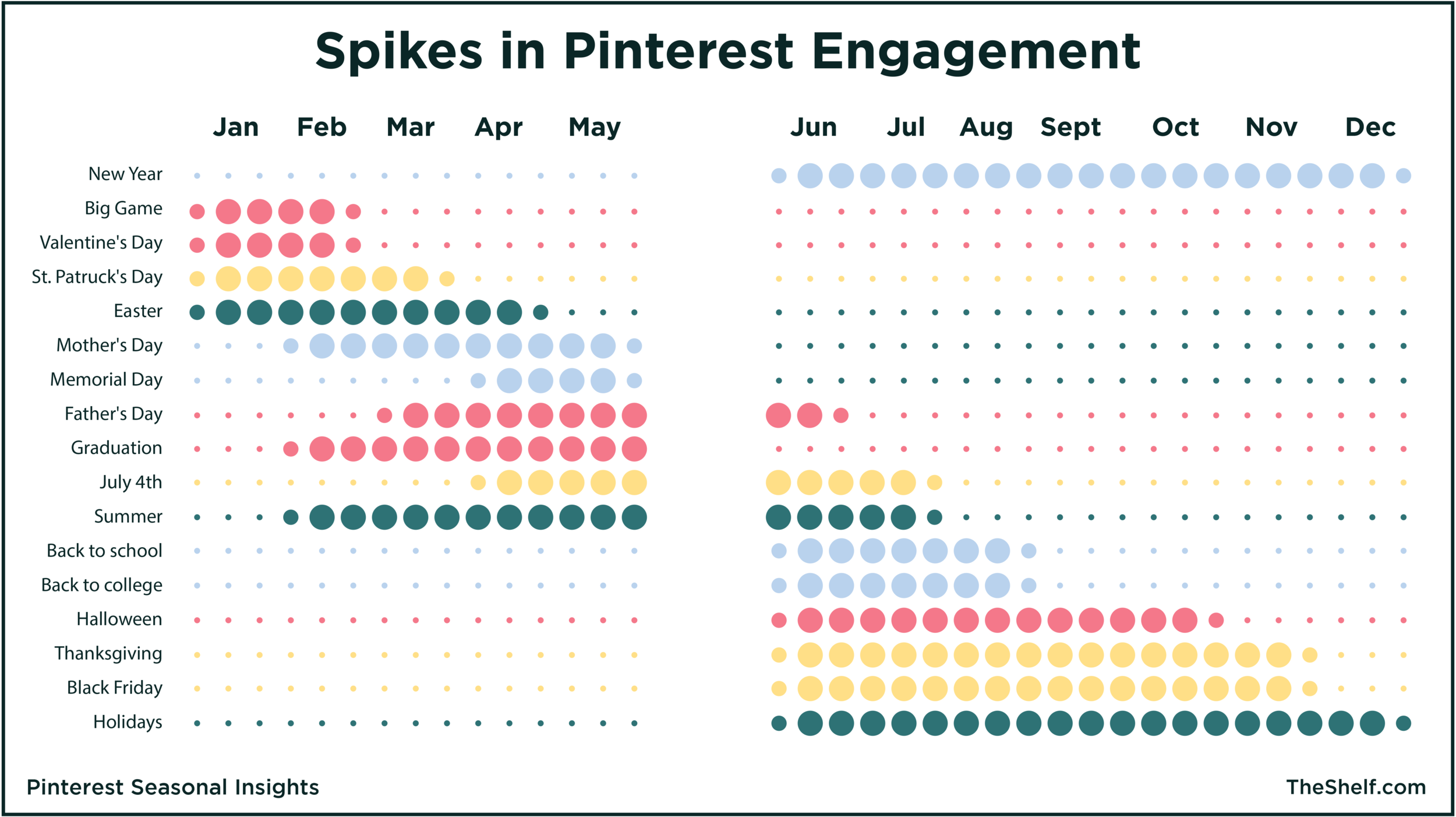
Pinners are planners. While Pinterest users post about seasonal events year-round, there are noticeable spikes in engagement with holiday- and event-related content in the weeks before that holiday or event.
But if you notice, the posts start typically a few months ahead of the holiday. Pinterest users tend to start planning twice as early as people who use other platforms. Heck, Father’s Day ideas start circulating around the platform as early as March and interest in Halloween starts to spike in June.
Pinners also use the platform to plan life’s important milestones, like buying a new home, decorating your home, getting married, and going on vacation.
Pinners Are Purposeful
Pinterest users are more likely to use the platform for the intention of finding products and ideas, as opposed to just using the platform to kill time. Ninety percent of users use Pinterest to make purchase decisions.
Pinners Favor Mobile
Pinterest users heavily favor the app. Eighty percent of users access Pinterest on mobile devices and 85 percent of Pinterest searches are on mobile.
Pinners Use Pinterest to Source Ideas
Pinterest is the go-to spot on the web for people to discover new products and source new ideas, and part of the reason branded content is so effective is because Pinterest shows new content based on what people have seen and engaged with before. This personalization helps the platform naturally integrate product ideas and Promoted Pins in a way that doesn’t look like ads or make users feel like they’re being marketed to.
Pinners Can Buy Instantly
Most social media platforms are shoppable now. With Pinterest, every one of the images acts as a direct link back to the site, making it infinitely easier for companies with promoted posts to attract new followers and site visitors.
Half of all Pinners make a purchase after seeing a promoted pin. And, since so many Pinterest users are actively looking to make their next purchases, smart marketers can leverage the platform as a way to generate both traffic and revenue.
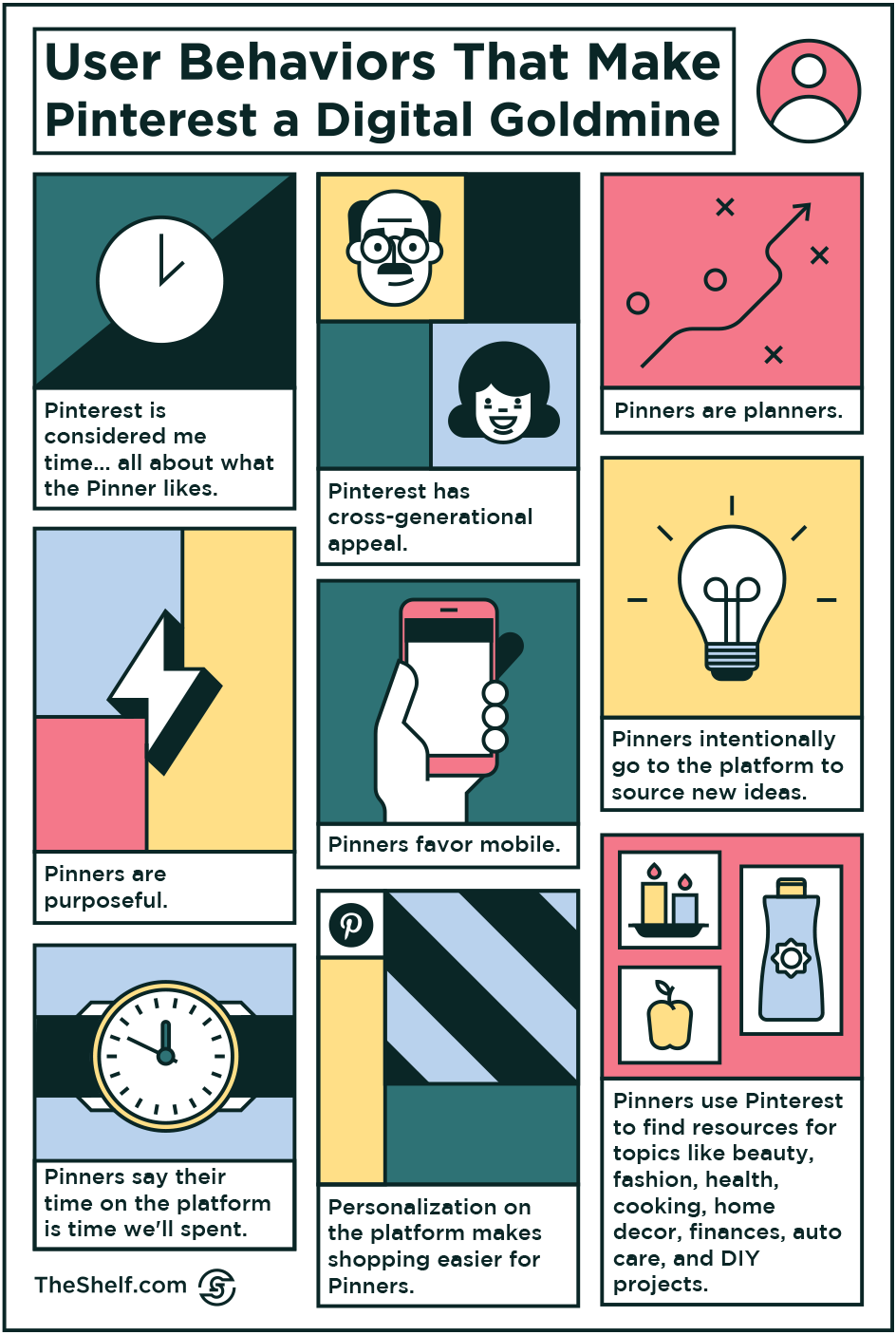
A Simple Process for Creating Your Pinterest Business Account
It’s true that you’re going to make a hefty front-end investment laying the foundation of your Pinterest marketing, but managing Pinterest is actually pretty easy (and a little addictive). Pinning and repinning takes up very little of your time, and in many ways, it’ll become second nature.
Here’s what you need to know about setting your Pinterest business account.
#1 Create a Business Account
You may have a personal account, but you still want to create a business account that you can use to run campaigns and monitor the performance of your pins. Pinterest is like most social media sites in that way – business accounts give you access to features you need to run successful marketing campaigns. Plus, you can start creating rich pins. More on those later – just know, they’re super important.
#2 Stay On-Brand
Once you’ve got a business account set up, you’ll need to get your branding in order. Of course, you’ll need the basics as well: A clear profile picture, business name, and bio are essential – just like on any other platform. You’ve got to put your best foot forward so people can see your awesome brand personality shining through.
#3 Create Keyword-Optimized Boards
Pins go on boards, so in order to add pins or repin anything, Pinterest needs to know where you want pins to go. This is a good thing because Pinterest is AI-powered, so it learns your preferences based on what you pin and repin and starts showing you more and more content like the content you’ve engaged with previously.
You’ll need to create keyword-optimized boards. For us, a lot of our boards focus on either blogger life or marketing strategies. So, you’ll notice we have tons of style and fashion boards, lots of infographics, a board that’s specifically to promote our blog posts, even boards on beauty trends and color combinations that look cool (we’re all about color).
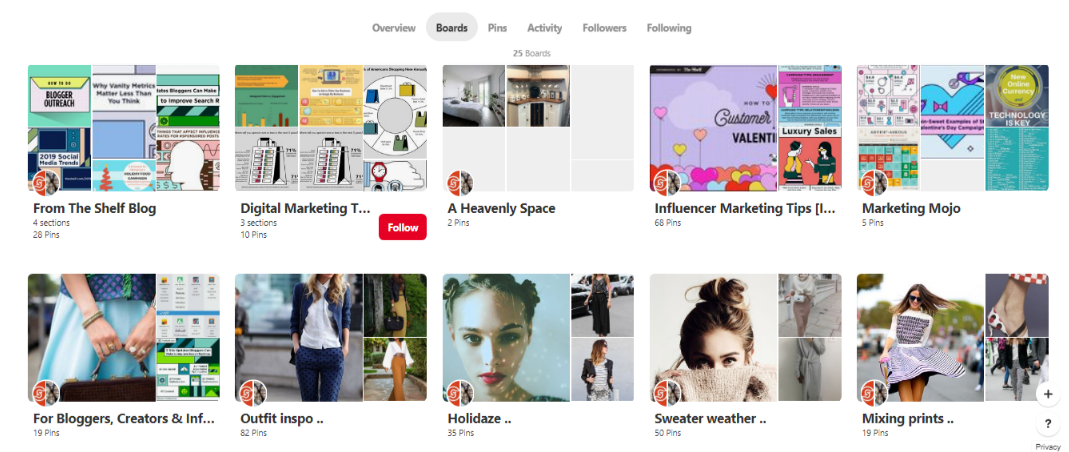
Each board you create can be classified as either Public, Secret, or Group. Best practices indicate that creating 10 boards initially is a good way to start, with each board tailored to your target audience in order to attract them to your pins.
Pinterest serves two billion searches a month. As you can imagine, pinners will need a way to find your content. That’s where you keywords strategy comes in. Your keywords are going to be vital when naming and creating your boards. Choosing which topics to focus your boards on should be based on the keywords you think are most important to your brand.
#4 Design and schedule pins
Next, you’re going to need some pins creating for your content so you can get sharing, and start growing your audience. Canva is an easy-to-use tool that will help you streamline this. The platform is free to use (or you can upgrade to a paid plan) and it comes with templates… for the design-challenged pinner.
Pinterest is a visual platform, so creating pins that are eye-catching colorful and easy to read / understand is important for growing your audience. As soon as someone sees your pin, he or she should know exactly what the webpage you’re leading them to is all about.
To make sure your pinning strategy is as effective as possible, make uploading your pins a regular part of your content distribution schedule. Using a scheduling tool like Tailwind is a good way to do this, and also gives you access to Tailwind Tribes, where other users will also share your content to increase your reach.
#5 Make Pins That Convert
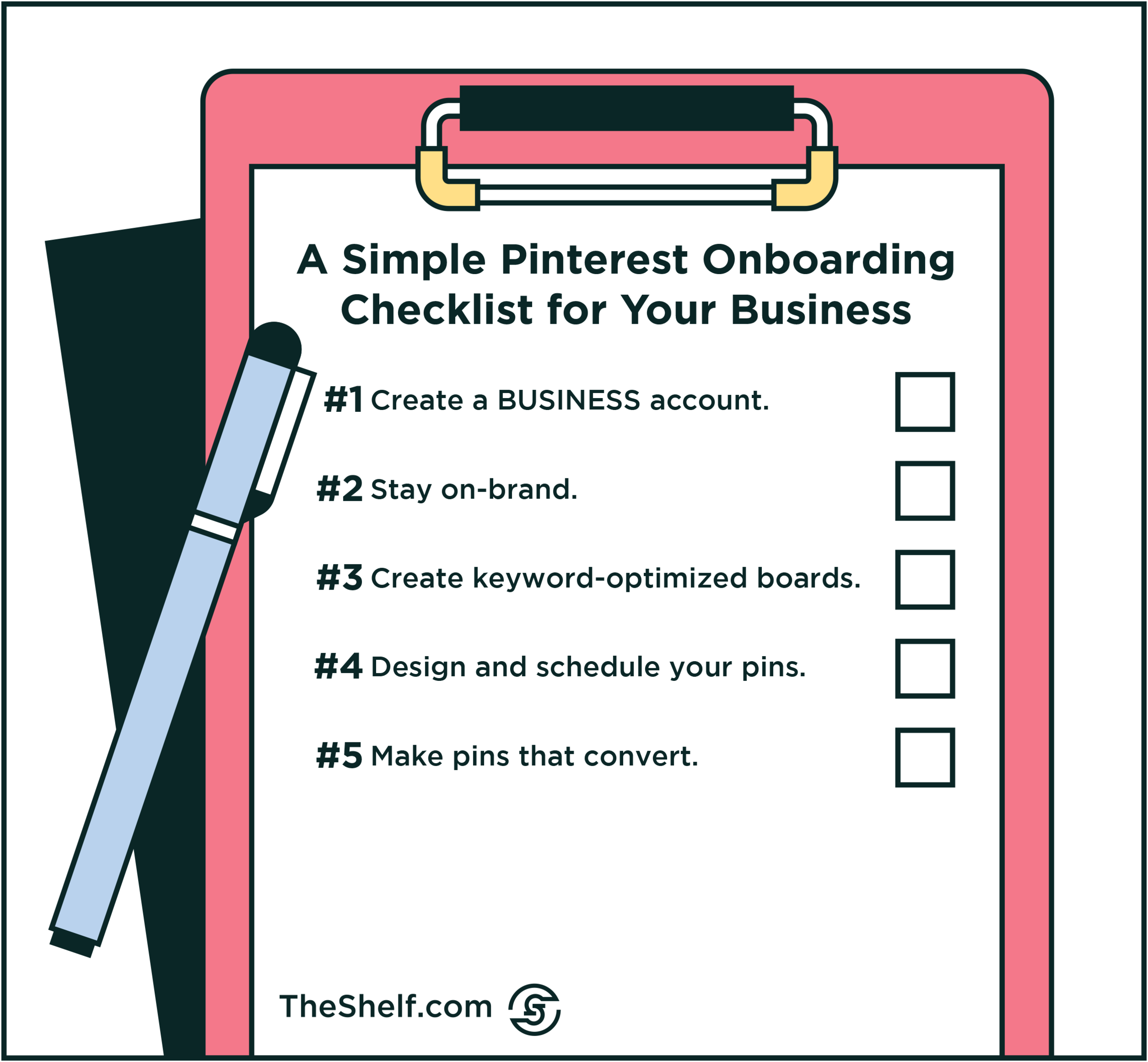
Possibly the most important factor in a successful Pinterest marketing campaign is how you build and design your pins. The huge focus on aesthetics on this platform means you need to be on top of your game when it comes to this side of the platform. We know how intimidating creating any kind of visual content can be if you’re not a graphic designer by trade, but Pinterest doesn’t have to be as difficult a task as you might think. I’ll walk you through it.
Let’s start with covering the basics of pin design. Without having these fundamentals down, no matter how fancy your design skills are, your marketing is going to fall flat.
Dimensions
Each of your pins should be vertical images, and according to Pinterest themselves, the ideal dimensions are 600×900, or any 2:3 ratio image
Image Style
Images that are high quality, light, and surprisingly, without faces receive more repins on average than others
Plain Image vs. Text
Depending on your target market and brand style, you may want to include text on your pins instead of just plain images. Both are viable options on Pinterest, and choosing which one to use should depend on your audience.
Of course, when it comes to design, there are a million and one ways you can go to make your pins stand out. From cool fonts to striking imagery, your pins are your chance to express your brand, so don’t be afraid to go a little wild.
Before We Wrap Up, I’ll Share Some Pin Design Ideas
When appearance really is everything, you need to be spending time designing the perfect graphics for your pins. So, for those who aren’t exactly the visual content type, let me show you some of the different ways you can go when building your own Pinterest designs.
Image only
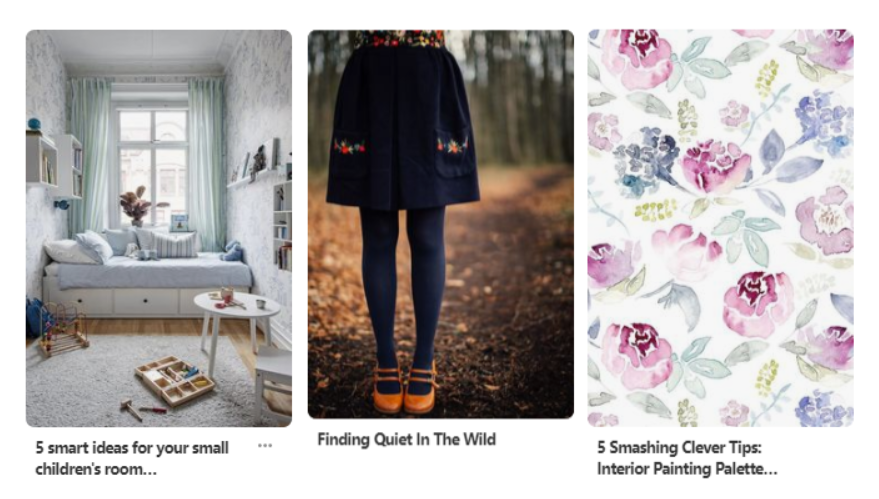
If you have the ability to stage and capture stunning photographs or have an entirely visual product, then image only pins can be the best thing for you. People use the platform to create dream collections, so having high-quality images they can swoon over is perfect. Just remember to avoid including any faces, and keep your images as bright as possible for maximum impact.
Text over image
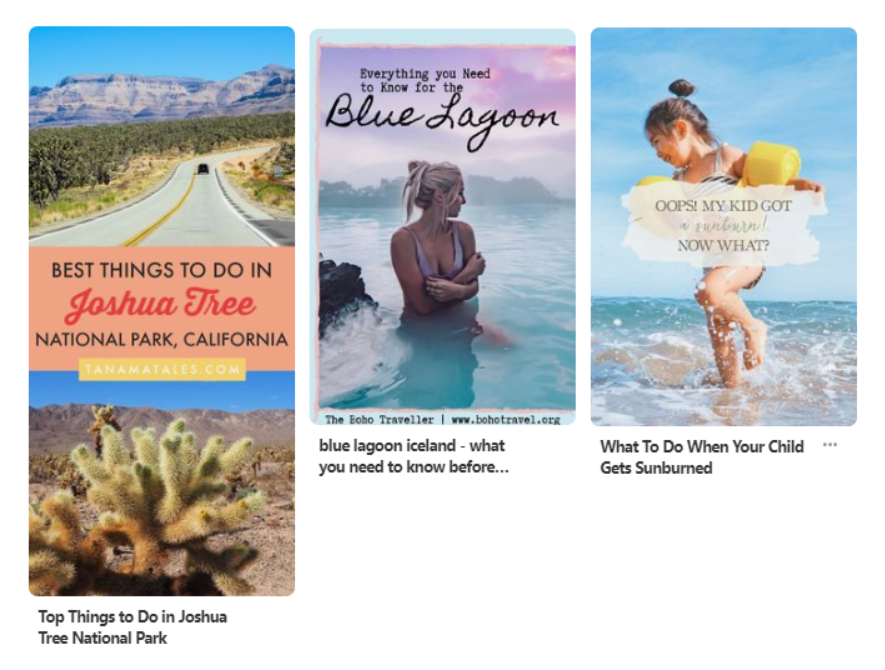
If you’re using pins to help promote blog posts or special offers on your site, then including a text overlay on your image is the perfect way to go. Having titles like the ones above on your pins helps to inform viewers exactly what they will see when they click through to your site.
Just make sure that your text is as easy to read as possible. The best way to do this is to place a solid shape underneath it so that it’s not affected by your background image. Also, take some time to experiment with fonts and see which styles and sizes are easiest to read both on a desktop and mobile view.
Infographic

One of the most popular forms of pin design is the infographic. These images educate and inform the viewer, allowing them to complete a project or plan a trip with added ease. People love to share images like these for future reference so can work as continual traffic for your site.
You have so much freedom with your design choices here as well, you don’t need to stick to the usual cookie-cutter style of infographic. If you take a look at the examples above, they all work in different ways, with very different styles. You can tailor yours to your audience and brand.
Rich Pins
If you’re linking your Pinterest strategy to a product, article, or recipe on your site then you need to be using rich pins. These special kinds of pins show more information on your pins to help inform viewers about what you have to offer. Not only do they look better than regular pins, but Pinterest will also sometimes amplify the reach of these pins so even more people will see your great content.
To make rich pins, you need to apply through Pinterest – this is entirely free to do, so every account can take advantage. Once your site has been approved, every pin you create, with the necessary data, will be shown as a rich pin.
Final Tips for Making Pinterest Work for Your Business
As with any social media site, the way the general public uses Pinterest, and the way businesses use it differ greatly. You can’t simply expect to put up a few boards, pin a few images to them, and suddenly attract loads of web traffic. You have to do things differently to get the best results.
Add Pinterest Save Buttons to Your Site
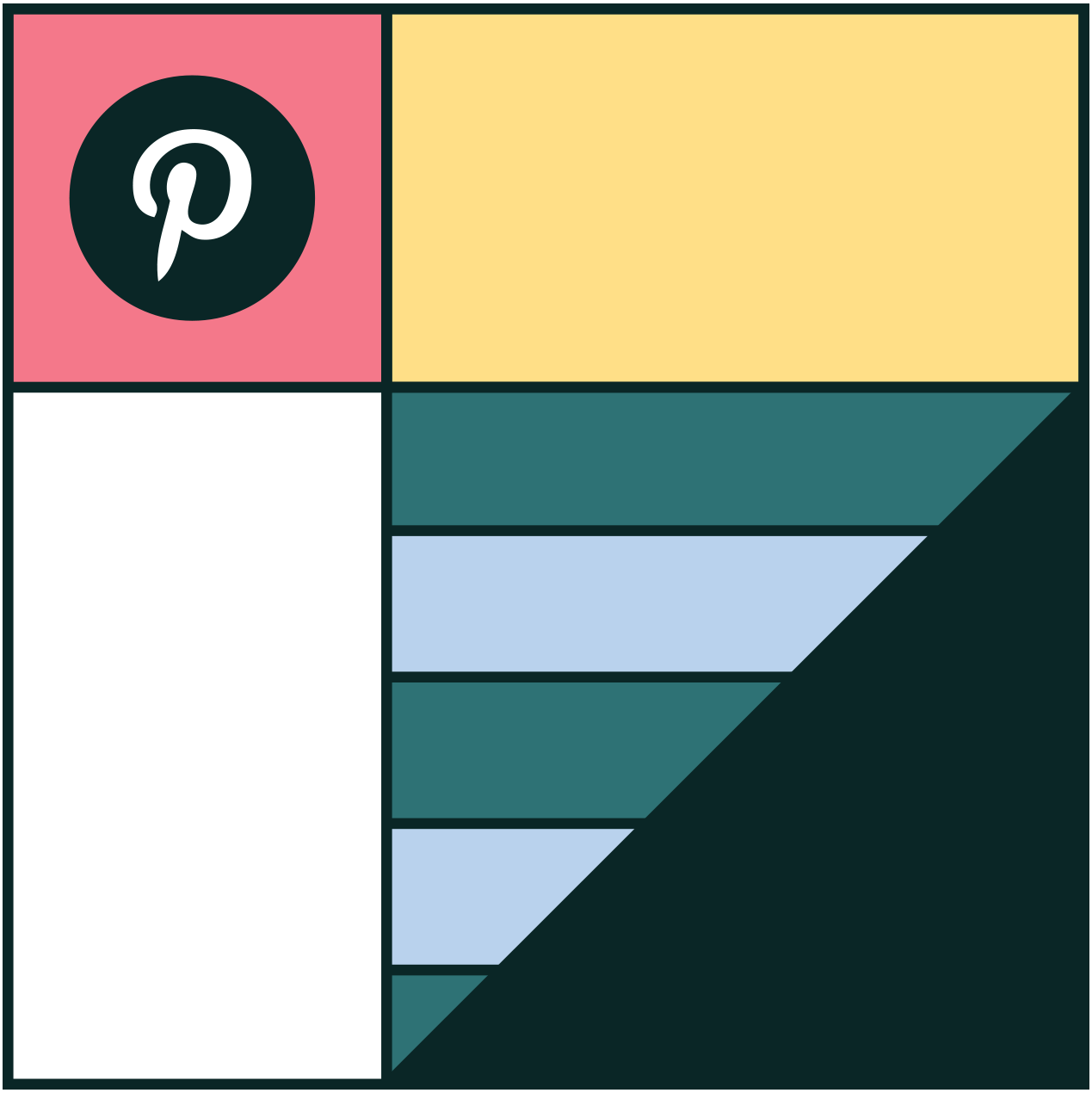
You want to be sure that it’s not just you pinning your content on the site. You want your followers, customers, and potential leads to be doing it as well. The best way to this, is to make it as easy as possible for them to share your content. By including a pin button on your site, you can increase the amount of content pinned from your site by up to 5x as much.
You can install permanent pin buttons to each image, or use hover buttons that only appear when a user moves the cursor over an image. The latter can often look cleaner and allow your pictures to maintain their visual integrity. But, by having a permanent button, you’re making it easier and more obvious for users to take advantage of the option.
Pin Consistently
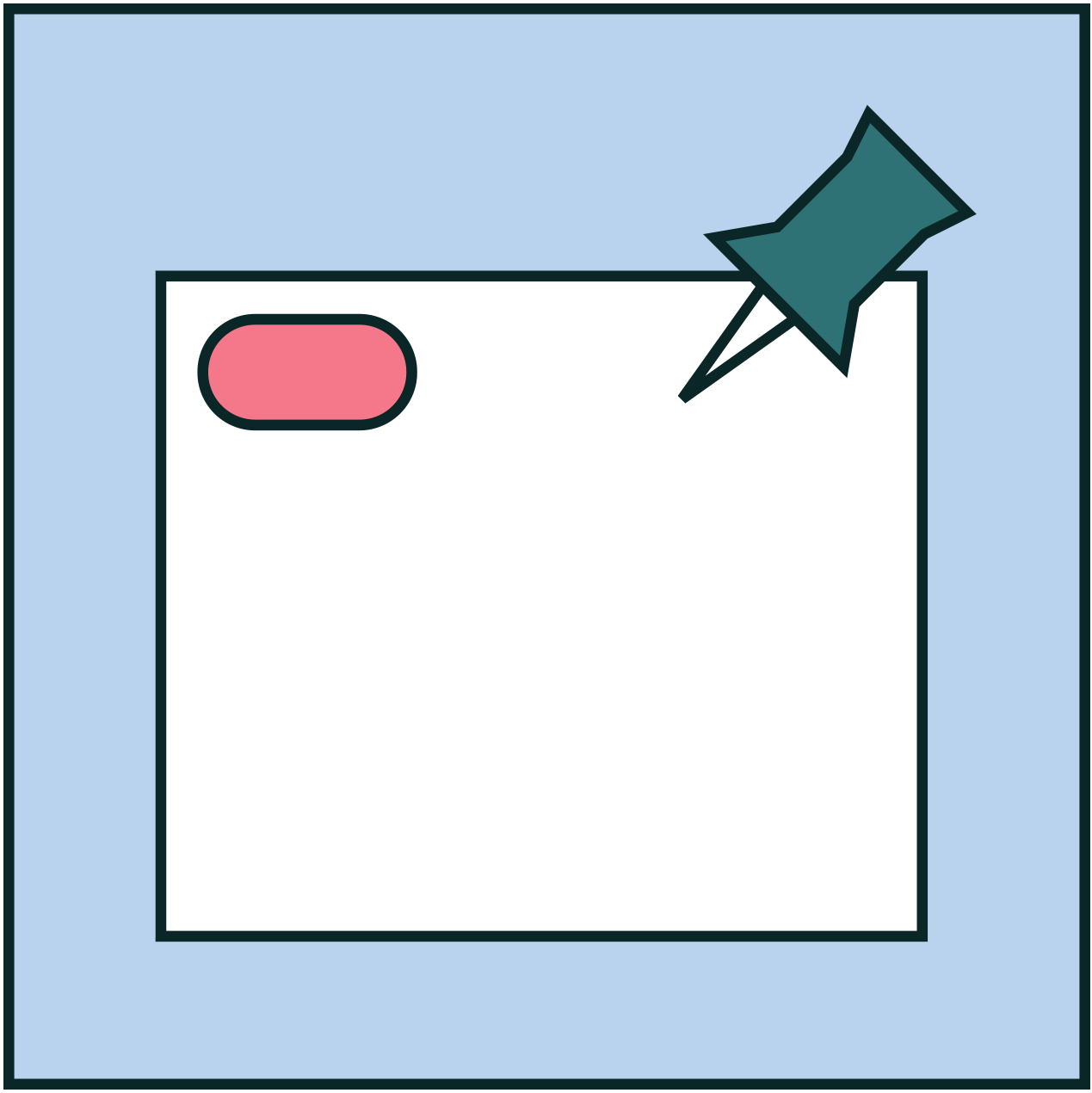
Dumping all of your pins in one go is not recommended. Instead, you should aim to pin at least once a day, ideally in the evenings or at weekends if you’re working with the U.S. market. Spread your pinning throughout the day and week to help keep a consistent schedule going. As with any marketing – consistency really is key.
Plan Ahead for Holidays
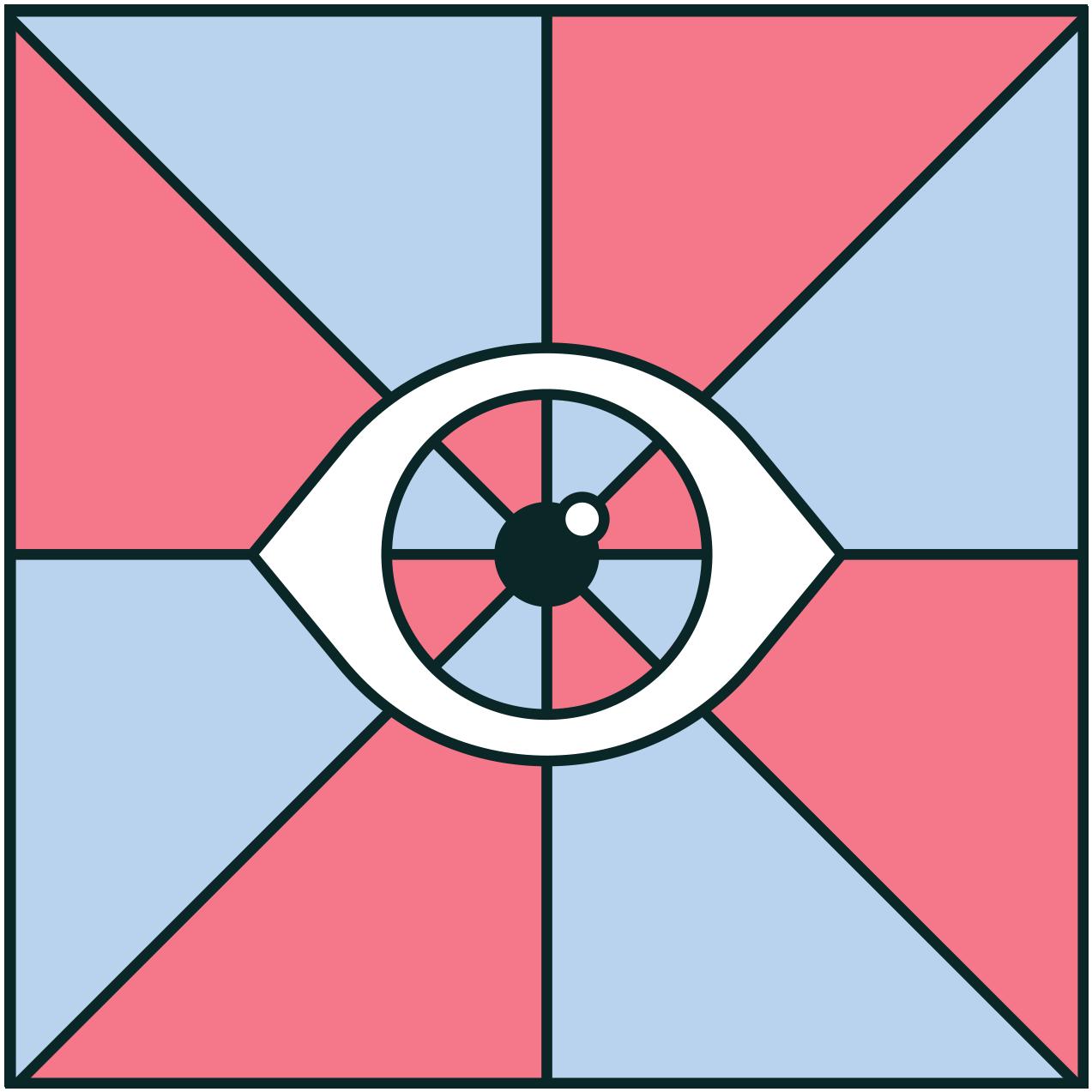
When it comes to holidays or special event marketing, plan to start pinning around 45 days in advance. This gives your pins time to get traveling around the site and attract more attention.
Make Your Pins Accessible
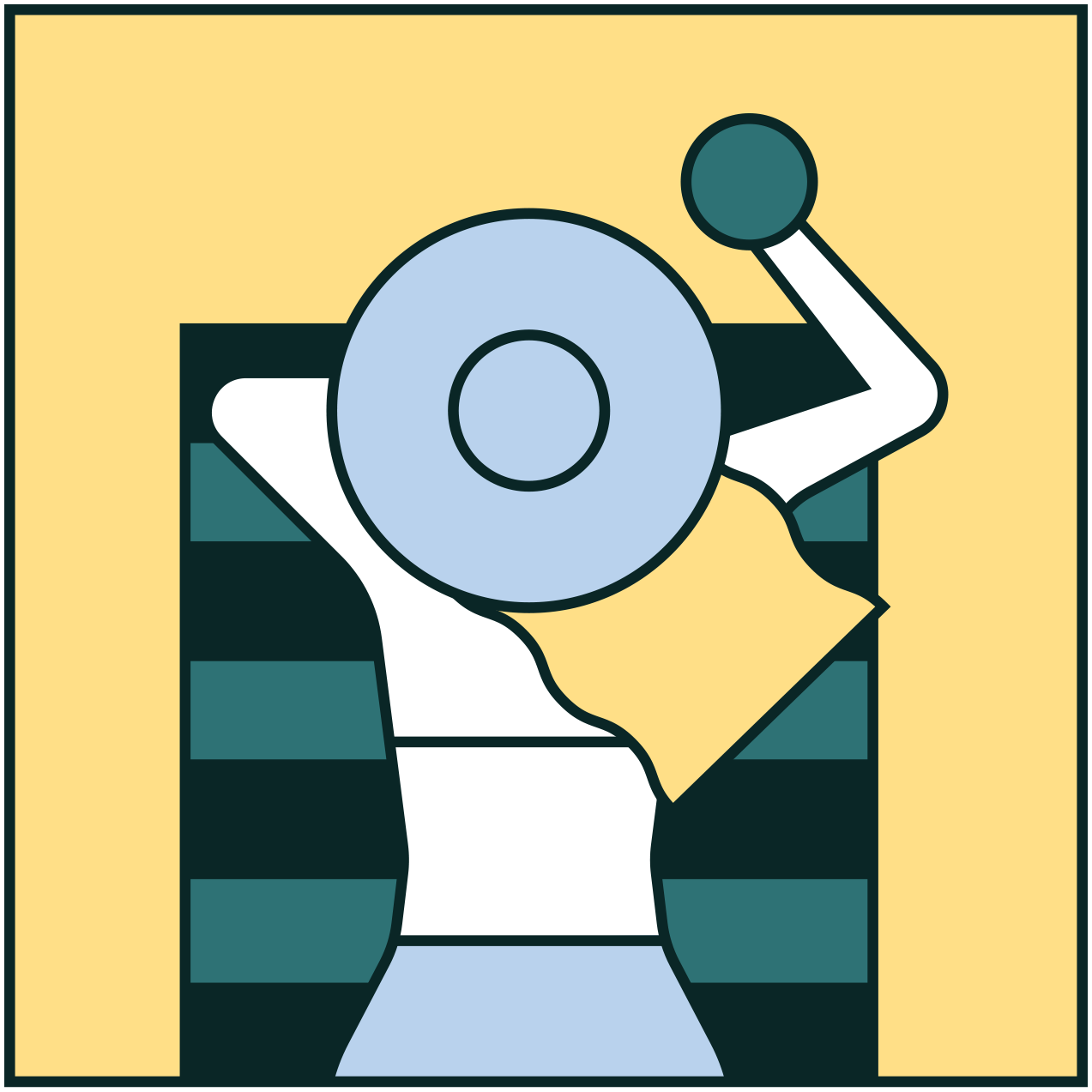
For many of us, it’s easy to forget that not everyone who uses social media can consume the content in the same way as us. Pinterest is a highly visual platform, so this can be severely limiting for those with visual disabilities. There are ways you can make your content more accessible, helping to expand your audience even further.
For instance, if someone needs to use screen readers to access visual content online, text over images won’t register as text to them. This means that you need to incorporate proper pin descriptions to really make your pins work for you. Also, make sure that any fonts you choose to use are as clear and easy to read as possible. Finally, don’t forget to be conscious of your color choices. If you take the time to use color contrast ratios, not only will it make your content easier to read, it will also make it look more appealing in terms of design.
Promote Your Pins
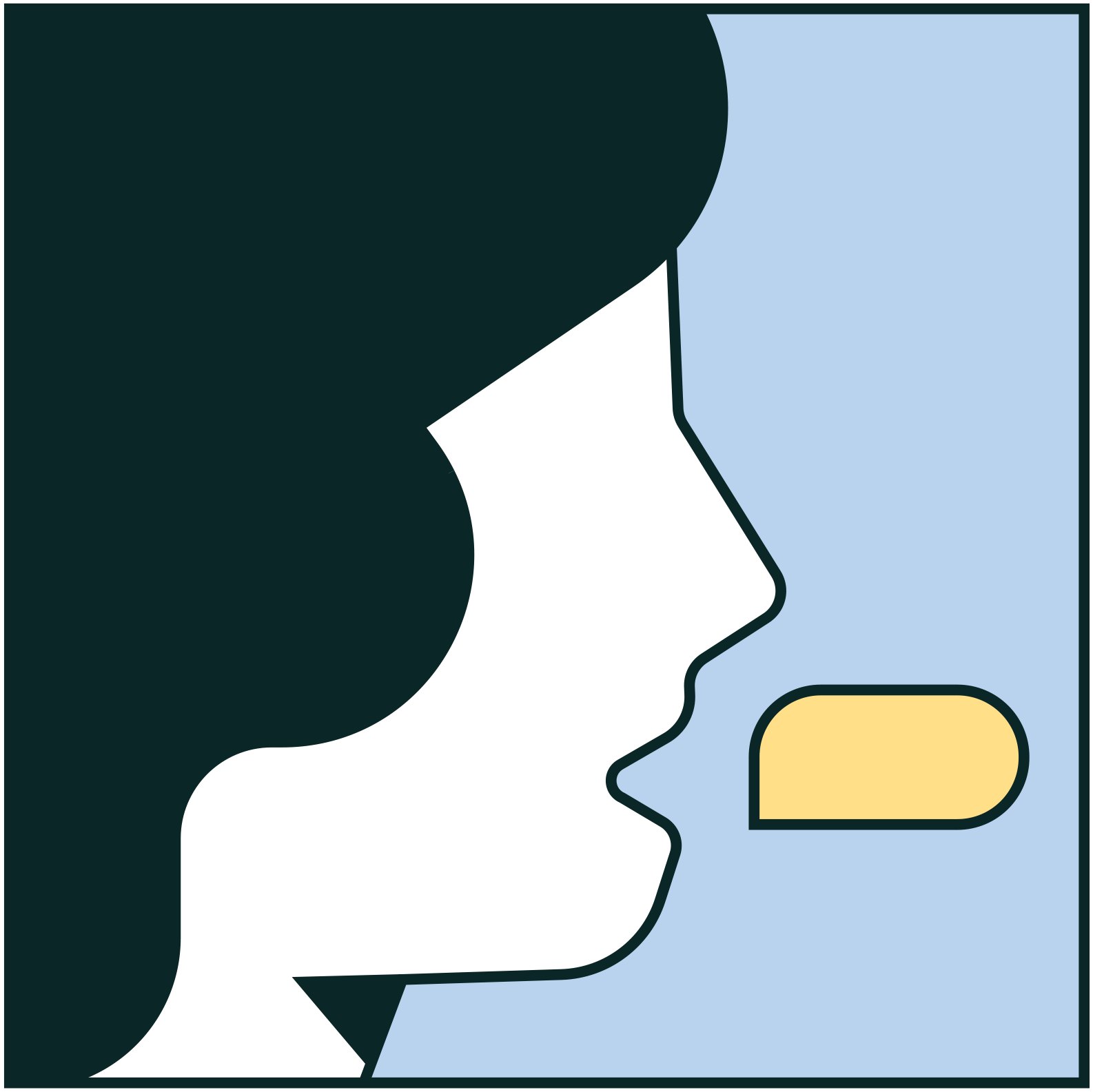
If you have a marketing budget for social media, you should definitely consider plugging some of that cash into a Pinterest strategy. There are two different options when it comes to spending money on marketing your pins – promoted pins and shoppable pins.
Promoted pins work in pretty much the same way as promoted posts on any other network. You pay money to have Pinterest show your pin to people who you select through targeting. How many people see it will depend on your ad budget. They identify these posts with a small “promoted” button on the bottom of your image, and viewers can select that button to see more information about who promoted it.
The difference with using these promoted pins on Pinterest though, is that once a user pins your pin to their board, they begin to act like organic pins. This is why promoting on Pinterest can really help your budget travel further. In fact, according to Pinterest, brands who launch ad campaigns on the platform received an average of 20% more organic clicks.
Promote Your Pins
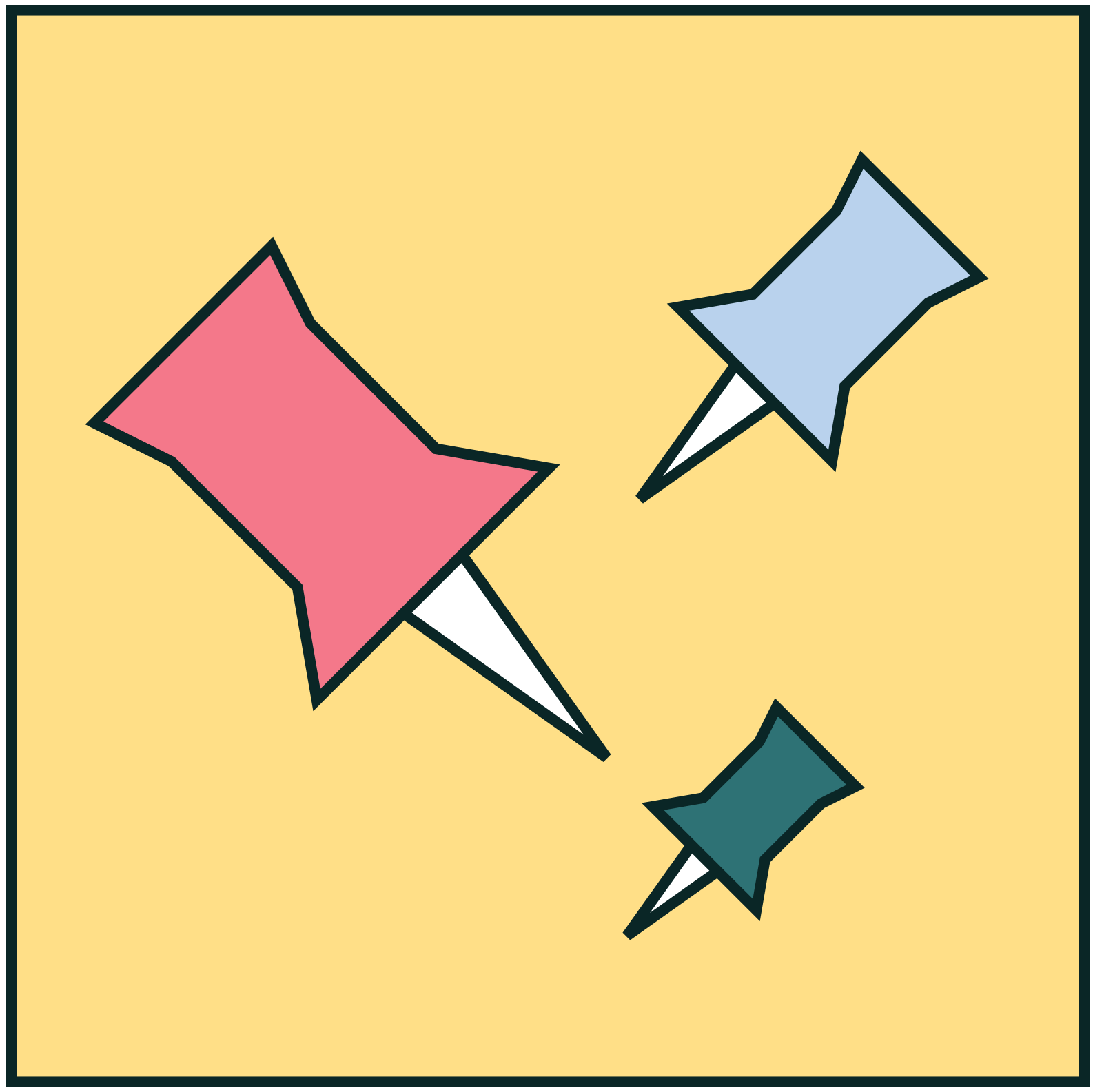
These pins are ideal for when you have multiple items to promote in each image. They appear pretty similar to promoted pins, but they have little dots over each product that you can click through and buy.
Pinterest recommends that you include between 4-6 buyable items in each pin to get the best results. Each link should go directly to the object when possible to make it easier for users to engage with.
It pretty much goes without saying, but these pins are optimized for generating sales, so if brand awareness is your goal, you’d be better sticking with the traditional promoted pins.

TL; DR – Pinterest is Effective AF
Pinterest is one of those great online tools that you can really get results from, even without spending a dime. It is still extremely underused by many businesses, so now really is the time to capitalize on the opportunity and get ahead of your competition.
Pinterest is visual discovery platform where users go to dream, get inspired, and perhaps most important to brands… users use Pinterest to plan purchases. More than half of active users open their apps in the store to use as a shopping list.
When it comes to your Pinterest marketing strategy, you can’t really phone it in. The returns will be better if you can get in there and do the work. Spend the time nailing your Pinterest marketing strategy. Design great-looking pins, schedule them out across the week, and build your boards around the best keywords for your brand. Do all this, and you’ll be winning.

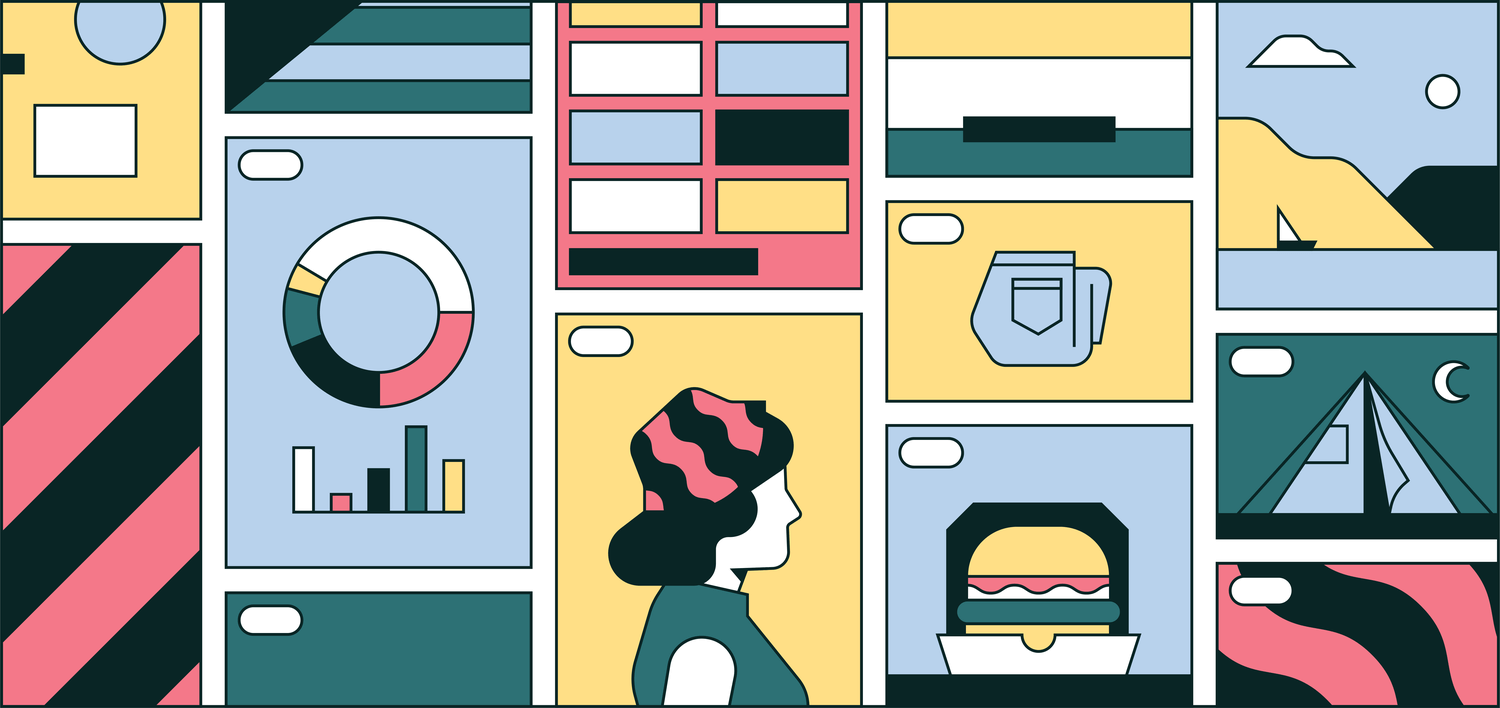

Leave a Reply